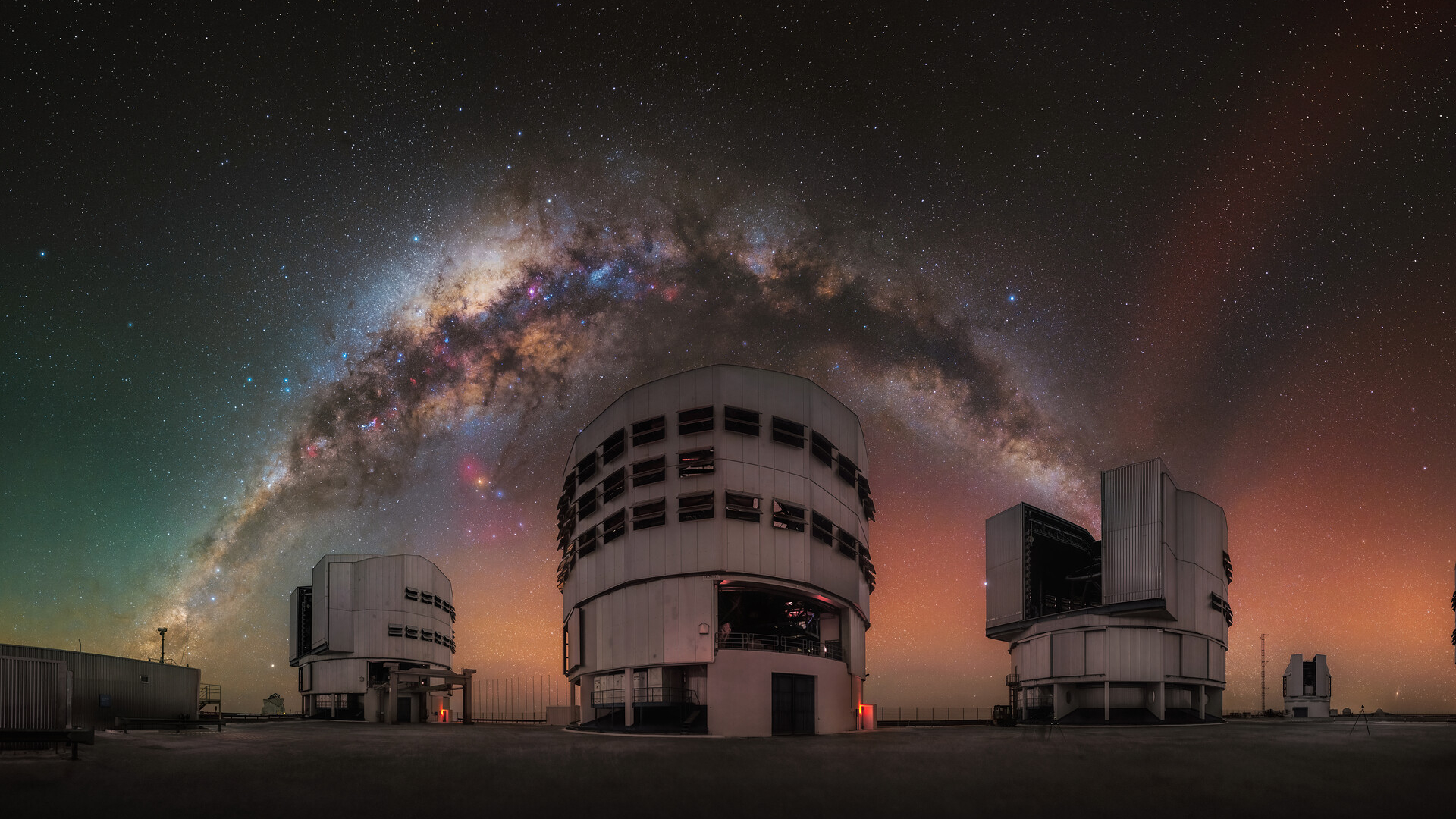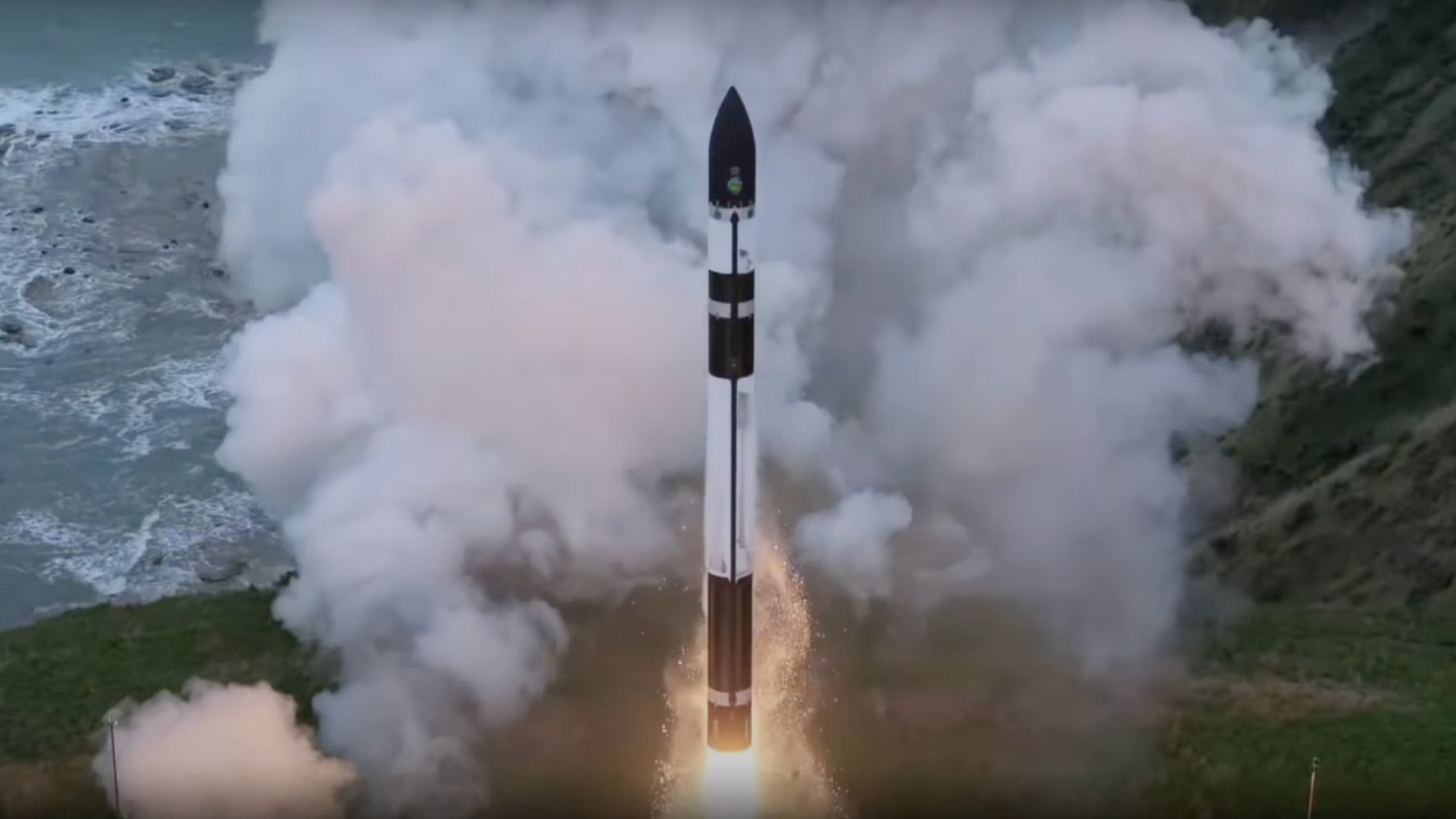The Milky Way arcs over the Very Large Telescope | Space photo of the day for Nov. 5, 2025
It's a reminder of why preserving pristine night skies remains essential for both astronomy and human wonder.

High atop the arid plateaus of Chile's Atacama Desert, one of humanity's most powerful astronomical instruments peers into the depths of the cosmos: the Very Large Telescope (VLT). Operated by the European Southern Observatory (ESO), the VLT has long been at the forefront of astronomical discovery, as scientists use its cutting-edge technology to explore distant galaxies, and some, like our own Milky Way, that are closer to home.
What is it?
Three of the VLT's massive domes were recently treated to this view of the Milky Way. Above the observatory, a soft green and red glow, known as airglow, helps to tinge the horizon. Airglow is a natural phenomenon arising from chemical reactions high in Earth's upper atmosphere, where atoms and molecules release light in the process. Depending on which elements are involved, airglow can appear in subtle shades of green, red or orange.
Where is it?
The VLT is based in the Andes Mountains in the Atacama Desert.
Why is it amazing?
Airglow is incredibly faint, and invisible in most parts of the world because of widespread light pollution. Only in some of Earth's darkest places, such as the Atacama Desert, can this natural radiance be seen. It is precisely these conditions that make the VLT's site one of the best observing locations on the planet.
Astronomers are increasingly concerned that even remote observatories like the VLT may one day face the creeping glow of artificial light. Urban expansion, satellite constellations and industrial development all threaten to erode the natural darkness that makes sites like the Atacama Desert invaluable. Protecting these rare darkness sanctuaries is not only an environmental issue, but a scientific and culture one.
Want to learn more?
You can learn more about the Very Large Telescope and ground-based telescopes.
Breaking space news, the latest updates on rocket launches, skywatching events and more!
Join our Space Forums to keep talking space on the latest missions, night sky and more! And if you have a news tip, correction or comment, let us know at: community@space.com.
Kenna Hughes-Castleberry is the Content Manager at Space.com. Formerly, she was the Science Communicator at JILA, a physics research institute. Kenna is also a freelance science journalist. Her beats include quantum technology, AI, animal intelligence, corvids, and cephalopods.
You must confirm your public display name before commenting
Please logout and then login again, you will then be prompted to enter your display name.

